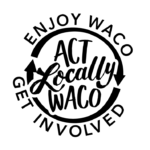(Tami Nutall Jefferson, a married mother and grandmother, is going back to school and she has invited us all along to enjoy the ride. For more posts in this series, click here: Tami’s Big Do Over. – ABT )
By Tami Nutall Jefferson
So, this month – at startup camp – I made history. In my own history book. This past weekend was the first time I have ever pitched a real business idea to a room full of anonymous people. I talk about my dreams and goals with my friends and colleagues all the time, but when it comes to public speaking – and especially about things that are close to my heart – I feel like I have a watermelon in my throat, my mind goes as dark as night, my voice vibrates like I’m yelling into a fan on speed 3, and I start crying inside. Public speaking is my number two fear. Speaking in public to people I don’t know, is number one – which is why my past business endeavors (cough) failed. Because, I refuse to talk to people. Who knows the psychosis behind it, who cares. What matters is how palpable the fright is at that moment – coupled with rejection and embarrassment. So let me tell you what happened.
The Chosen 50
When I first decided to apply at Texas A&M, I started investigating their student entrepreneurship culture online where I discovered this nifty experience called 3DayStartup. Basically, for three days (Friday-Sunday), a group of TAMU budding student business leaders are locked in a room where they flesh out a business from idea to pitch – and deliver that pitch in front of real industry experts and venture capitalists. I kept 3DS on my mental future-things-to-do list while they kept reminding me about it via email almost daily; probably because I signed up for the email list. Then one day in late September, I received an email that said applications were open for the Fall 2017 3DayStartup. A couple of days later something said “Apply!”. As I give in easily to inner-peer pressure, I applied with a non-descript business pitch idea. Soon after, I received another email saying that I was selected. I was one of the Chosen 50! That was impressive to me, until I found out that every student in one of my peer’s startup living community applied but only 6 were selected – my impression instantly elevated to awe. I knew at that point, God put me in that room. Why? That had yet to be revealed. But I digress.
The Struggle Is Real
After acceptance, the reality of The Pitch set in. How do I pitch a real estate development idea that is sexy enough for a room full of college students to vote for? How do I not die in front of people I don’t know? When I went to the orientation, I found out that pitches were optional. Best news ever! I could NOT pitch and just focus on how to build a business as a team – a new concept for me. But, the Thursday night before 3DS, I realized that I am a old @$$ woman, and I can not waste my time, tuition, and opportunity on being scared to talk to people anymore. If I can’t do this now, then what is even the point of me being in University, Leadership Plenty, Central Texas African American Chamber, and all these other organizations I purport to enhance through my service? I have to do it. And I have to kill it. I worked all night on an idea to pitch, and I came up with a clever real estate one. It had to be real estate, because I had to rep my College of Architecture while the other 49 students repped the Engineering & Business schools – which meant app after app after app. So I built a 60 second pitch in that 1 and a half hour drive to College Station on Friday.
The Struggle Is Over
I stood up on stage. I went blank at first. But I did it. And my pitch was chosen for round 2! Round 2 was a follow-up 60 second pitch with audience questions – for which I had no prepared pitch. I wrote one on the spot, but pretty much had to wing it on stage. My idea was ultimately not chosen for the Final 5, but I did get great feedback and interest and much love from the students and our Austin Capital Factory facilitator. I was first pick on a startup team for a business card app where I learned how to lead, co-lead, and fall back as part of a dynamic team. The best part of the weekend – aside from all the great free food and snacks – was when I got to encourage my teammate to deliver our pitch to the crowd. Her fright was real, as evident in her hyperventilating, but she killed it too. I was so proud of her. I loved seeing her growth. I loved this whole experience and I love the energy of being in a room full of millennials (sans the Ma’ams).
Jump
The point in all of this is that – first year, fifteenth year, student, professional, stay at home parent – great experiences and great people live on the other side of fear. Go ahead. Jump that bridge.
 Tami Nutall Jefferson is an older, non-traditional student with a professional real estate background. Tami begins her first academic year at Texas A&M University pursuing a Bachelor’s Degree in Urban Planning and Real Estate Development while commuting between Waco and College Station. Her hope is that Waco becomes the most attractive, modern, vibrant, and prosperous version of itself as an inclusive city and her professional mission is to help make that happen as a real estate developer and entrepreneur. Tami volunteers her time and voice to many downtown Waco placemaking and economic development causes and organizations. To engage and share your non-traditional student experiences with Tami, contact her at taminutall@gmail.com or connect with her on Facebook https://m.facebook.com/tami.nutall1
Tami Nutall Jefferson is an older, non-traditional student with a professional real estate background. Tami begins her first academic year at Texas A&M University pursuing a Bachelor’s Degree in Urban Planning and Real Estate Development while commuting between Waco and College Station. Her hope is that Waco becomes the most attractive, modern, vibrant, and prosperous version of itself as an inclusive city and her professional mission is to help make that happen as a real estate developer and entrepreneur. Tami volunteers her time and voice to many downtown Waco placemaking and economic development causes and organizations. To engage and share your non-traditional student experiences with Tami, contact her at taminutall@gmail.com or connect with her on Facebook https://m.facebook.com/tami.nutall1
Learn more about 3DS at www.3daystartup.com and Capital Factory www.capitalfactory.com
By Ellen Filgo
When my son was three, his daycare switched their lunchroom to being peanut-free. At first, I wondered what my son – who pretty much subsists on PBJ sandwiches – was going to eat, but soon figured out that he liked the almond-butter and jelly sandwiches I ended up packing in his lunch. While we don’t have any food allergies in our family, I have several friends with children who deal with severe or even life-threatening allergies to several different foods. I also have a good friend whose youngest son was a 23-weeker preemie and for many years got most of his nutrition by feeding tube.
Halloween Trick-or-Treating can be a tricky time for these families. Families that manage allergies or intolerances, or families of kids with celiac disease, diabetes or feeding tubes need to balance the desires of their children to have a fun holiday with keeping them safe. Much of our Halloween candy contains a lot of the most common allergens – wheat, soy, nuts, milk, eggs, and food dyes. In addition to that, much of the Halloween candy that people purchase comes in smaller sizes without nutrition labels, so parents can’t determine what is or isn’t safe to eat.
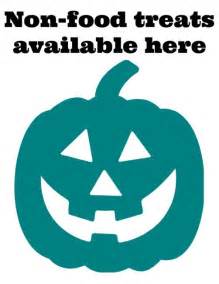 This is where the Teal Pumpkin Project comes in. The Teal Pumpkin Project “encourages people to raise awareness of food allergies and promotes inclusion of all trick-or-treaters throughout the Halloween season.” This movement provides a way – by offering non-food treats – to include children who normally would be left out of the fun of Halloween Trick-or-Treating. Families can participate by providing a separate bowl of non-food treats* for trick-or-treaters and by putting a teal-colored pumpkin at their door to let people know of their participation in the project. The Teal Pumpkin website provides a map where families can register their participation so that other families can connect with them.
This is where the Teal Pumpkin Project comes in. The Teal Pumpkin Project “encourages people to raise awareness of food allergies and promotes inclusion of all trick-or-treaters throughout the Halloween season.” This movement provides a way – by offering non-food treats – to include children who normally would be left out of the fun of Halloween Trick-or-Treating. Families can participate by providing a separate bowl of non-food treats* for trick-or-treaters and by putting a teal-colored pumpkin at their door to let people know of their participation in the project. The Teal Pumpkin website provides a map where families can register their participation so that other families can connect with them.
In addition, Holy Spirit Episcopal Church on Wooded Acres Drive provides an entire Teal Pumpkin-friendly Trunk or Treat on October 31 from 6-8 pm. Every single vehicle at the Trunk or Treat will have a bowl of non-food treats so that trick-or-treaters can have one fun and safe event to participate in.
Please join in this growing movement to make Halloween more inclusive of all trick-or-treaters.
* There are lots of great non-food treats that kids of all sorts love! The Teal Pumpkin Project provides a great list: Glow sticks, bracelets, or necklaces, Pencils, pens, crayons or markers, Bubbles, Halloween , Erasers or pencil toppers, Mini Slinkies, Whistles, kazoos, or noisemakers, Bouncy balls, Finger puppets or novelty toys, Coins, Spider rings, Vampire fangs, Mini notepads, Playing cards, Bookmarks, Stickers, Stencils
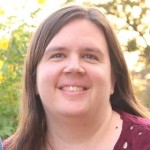 Ellen Filgo is a research librarian at Baylor and a Wacoan of 10 years. She is also the director of the Waco Diaper Bank and a member of Holy Spirit Episcopal Church. She loves living in Sanger-Heights with her husband, her stepson and her two energetic little boys. She has been known to get sidetracked researching the answer to a random question casually asked in a Facebook post.
Ellen Filgo is a research librarian at Baylor and a Wacoan of 10 years. She is also the director of the Waco Diaper Bank and a member of Holy Spirit Episcopal Church. She loves living in Sanger-Heights with her husband, her stepson and her two energetic little boys. She has been known to get sidetracked researching the answer to a random question casually asked in a Facebook post.
By Louise Powell
A year ago at Christmas time in our city, a young family with a tiny infant was suddenly homeless. When the baby’s father requested help at a local emergency shelter, he was told that Mom and Dad were welcome, but their baby would have to be placed somewhere else. When they called an 800 number for assistance, they were told that the only emergency family shelter in Central Texas was Sally’s House. Majors Anita and Brad Caldwell of the Waco Salvation Army remember that the young mother wanted only one Christmas gift—a plastic baby bathtub—because every time she bathed her little boy in a gas station sink, he hit his head on the hard metal faucet.
Sally’s House is vital to the community because it is the only emergency shelter specific for families with children in McLennan County. And, Sally’s House needs the help of the community because its federal funding has been cut. In 2015/2016 the federal government’s emphasis changed from shelter assistance funds to rapid rehousing. Although rapid rehousing of the homeless is a worthy goal, families in crisis will always need short-term emergency accommodations until other options become available.
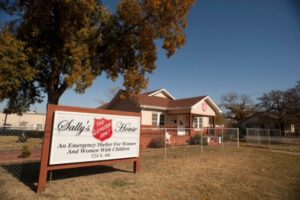 So for those who are unfamiliar with Sally’s House, what does the place look like? The small house is attractive, thanks to students from Live Oak Classical School who have spent hours this year repainting the exterior fences and sidewalk. The house itself is modest, with three bedrooms and bathroom facilities for families, one bedroom with bunkbeds for single women, two cots in the hallway, and a small area off the hallway for washers and dryers. A Salvation Army staff person is always on duty to safeguard the families at night. Professional case managers work directly with residents to provide budgeting, life skills, and other needed resources and assistance to focus on long-term solutions. Daily breakfast and a hot evening meal are provided at the Salvation Army Community Kitchen. Within 30 days, most families are transitioned to apartments.
So for those who are unfamiliar with Sally’s House, what does the place look like? The small house is attractive, thanks to students from Live Oak Classical School who have spent hours this year repainting the exterior fences and sidewalk. The house itself is modest, with three bedrooms and bathroom facilities for families, one bedroom with bunkbeds for single women, two cots in the hallway, and a small area off the hallway for washers and dryers. A Salvation Army staff person is always on duty to safeguard the families at night. Professional case managers work directly with residents to provide budgeting, life skills, and other needed resources and assistance to focus on long-term solutions. Daily breakfast and a hot evening meal are provided at the Salvation Army Community Kitchen. Within 30 days, most families are transitioned to apartments.
Last year 172 women with children, families, and single women stayed at Sally’s House. Too often all the beds–plus the cots in the hallway–are full, which means desperate families have to be turned away. Many of the moms, dads, and children no doubt spend nights in their cars or on the street unwilling to have the family split up among other shelters.
Because sometimes there truly is no room at the inn, the dream of the Waco Salvation Army Women’s Auxiliary, a group of local women who support Salvation Army ministries, is not only to sustain Sally’s House as it is now, but also to eventually build a much larger facility.
Won’t you, Waco and McLennan County residents, help us provide consistent help to homeless children and families? The Women’s Auxiliary of the Salvation Army is holding a fundraising event, “Repurpose for a Purpose,” where everything old is made new again. Waco’s best professional and amateur designers have contributed their finest work — repurposed furniture, household items, clothing, and art – to be auctioned off to the highest bidder. All proceeds benefit Sally’s House. We invite you to enjoy this special evening of fun, fabulous food, and incredible finds! For tickets and more information, visit www.SalvationArmyWaco.org/repurpose or call (254) 756-7271.
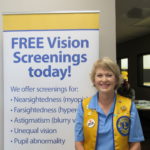 Louise Powell is currently an adjunct English instructor at Baylor and MCC. Previously she was an English teacher and administrator in Waco I.S.D. She is married, the mother of three grown children and grandmother to seven. Louise is a member and secretary for the Women’s Auxiliary of the Salvation Army and a past president of Waco Founder Lions Club, for which she currently serves as Vision Screening Chair.
Louise Powell is currently an adjunct English instructor at Baylor and MCC. Previously she was an English teacher and administrator in Waco I.S.D. She is married, the mother of three grown children and grandmother to seven. Louise is a member and secretary for the Women’s Auxiliary of the Salvation Army and a past president of Waco Founder Lions Club, for which she currently serves as Vision Screening Chair.
By Glenn Robinson
Given the complexity of today’s health care system, weighing options and making treatment decisions are difficult enough as it is.
While we are all grateful for the wonderful doctors and nurses who work long hours and go above and beyond for their patients, often it is family caregivers who are the unsung heroes of health care.
They are the ones who provide the relentless daily support for their loved ones who cannot care for themselves because of frailty, illness, injury, or disability. Their care is critical to sustaining or greatly improving life.
Being a family caregiver is the very definition of ‘labor of love.’ Spouses who act as the primary family caregiver bear an enormous burden. They routinely perform complex tasks virtually identical to what doctors or nurses perform in a clinic, such as medication management, wound care, using meters and monitors, and much more.
Making the job even more difficult is that more than half of spouses report no additional help from family or friends or home care aides, and three out of five caregivers also are members of the traditional American labor force.
And the cost of informally caring for particularly the elderly by friends and relatives in the United States? More than a half trillion dollars per year, according to one study, with Americans spending an estimated 30 billion hours annually providing care to elderly relatives and friends.
When a loved one is seriously ill – perhaps even dying – the decision-making process for the patient and his or her family becomes that much more difficult.
Too often, though, those decisions are not able to be made by the patient when the time comes. Rather, it becomes a burden that falls on a loved one – but it doesn’t have to be that way.
Advance care plans, which include advance directives, attempt to take the guesswork out of figuring out a patient’s wishes and values about end-of-life care while they are still of sound mind.
Advance directives are legal documents that establish guidelines for what treatments patients should or should not receive. They can lift the emotional burden off of loved ones responsible for making care decisions, because it is clear what the patient wants.
Both a living will and a health care power of attorney are types of advance directives. Unfortunately, a recent study found that just 29 percent of Americans had completed a living will that contained specific end-of-life care wishes, and only 33 percent had designated a health care power of attorney.
A rapidly growing field of medicine called Palliative Care is helping patients and their family members navigate the complex decision-making process surrounding serious illness and end-of-life care.
Whether it’s physical, emotional, or financial relief, Palliative Care is rapidly becoming a critical resource helping patients and families in difficult circumstances cope.
The goal of Palliative Care is to relieve a patient’s disease symptoms and minimize the side effects of treatment regardless of long-term prognosis. Palliative Care specialists often help families and patients make difficult decisions about whether to use highly aggressive therapies, and sort through treatment options – aligning them with the expectations of the patient and their family.
Additionally, palliative caregivers provide comfort care – which is spiritual, emotional, and psychological support and guidance.
The efforts of palliative caregivers are producing tangible results. Research shows that Palliative Care patients report improvement in pain or nausea, better communication with doctors and loved ones, and care that is more in line with their wishes.
Not only does not having an advanced care plan in place add burden to family members during an already stressful and emotional time, but it’s a burden on the health care system as well. The cost of care in the last week of life is 55 percent higher for those who have not had advance care planning discussions.
A Baylor Scott & White Health study showed that palliative patients and their families spend an average of $3,000 less in hospital costs than patients with similar conditions who did not receive such care, and these palliative patients often received not less, but better, care. This means having this very personal conversation is a decision that impacts all of us.
 Glenn Robinson is the President of Baylor Scott & White Medical Center – Hillcrest. He has over 30 years experience in hospital and health care management, and currently serves on several Boards associated with the Texas Hospital Association and the American Hospital Association. In addition, Glenn is Past-Chair and an active member of the Greater Waco Chamber of Commerce, and serves on the Prosper Waco Board.
Glenn Robinson is the President of Baylor Scott & White Medical Center – Hillcrest. He has over 30 years experience in hospital and health care management, and currently serves on several Boards associated with the Texas Hospital Association and the American Hospital Association. In addition, Glenn is Past-Chair and an active member of the Greater Waco Chamber of Commerce, and serves on the Prosper Waco Board.
This report, and other episodes of “The Business of Healthcare,” are available at KWBU.org.
The Act Locally Waco blog publishes posts with a connection to these aspirations for Waco. If you are interested in writing for the Act Locally Waco Blog, please email ashleyt@actlocallywaco.org for more information.
By Sarah Frank
At age 21 I feel as lost about sex as I did at 15.
Raised in a strong Christian community in a tiny Texas town, my sex education focused on abstinence. I can’t recall having a formal conversation about sex with either of my parents. The majority of my knowledge on sex came from the two days we covered it in health class and conversations in the girl’s locker room.
When I was in high school, my church briefly ran a program on Sunday nights where the girls and boys would separate and discuss passages from the Bible. One week, we had a Bible study over relationships and dating. Our group leader took the time to tell us about her past relationships and how difficult her love life was growing up. She explained that the first man she kissed she ended up marrying and described how much happier she was because of the fact that she waited. She encouraged us to do the same – to wait to kiss or do anything physical until after, what now seems to me to be, an obscene amount of time has passed in the relationship.
Meanwhile, in the next room over, the boys talked about sex and masturbation. The teaching was far from scientific. For example, we girls put our ears up to the door and overhead the statement “Every time you masturbate a kitten dies.” Whether the boys also got the speech about waiting to have any physical contact in a relationship at all, I do not know, but it is clear to me the boys and girls were hearing vastly different things and neither group was being given any understanding of what a healthy sex life looks like.
None of these conversations in health class, church, or in the home ever taught me how to have safe sex. In fact, these conversations have had a more damaging effect on my love life and in my relationships than a positive one. Growing up, I have been ashamed of my natural, human emotions because every older member in my family and in the church taught me that this desire was sinful. I never felt as if I had someone to talk to about sex and, consequently, I treated sex as something to be feared and not as a loving connection between two consenting adults.
As young adults my friends and I struggle with figuring out sex and taking care of our reproductive health. Abstinence-only sex programs didn’t work for us. Fear mongering didn’t stop us from exploring our basic human drive, it only made us terrified to speak with our parents or other adults during the time when we needed the most guidance. These programs avoided teaching us how to prevent pregnancy and STDs which is information we all, even married couples, need to know.
Even now as twenty-somethings, the closed-off approach to sex we were taught growing up continues to influence our sex lives and our relationships. Some of us are afraid of sex and intimacy even in long-term relationships because we were taught these desires are bad.
In retrospect, I see how important it is to talk about sex in an open and honest environment. As uncomfortable as it was to speak with my parents about sex, being able to have that open communication would have been better for me in the long run. I didn’t know where to set my boundaries, and I didn’t know what constituted sex. When the time came to practice my values, I didn’t know what they were. I had no one to talk to about this because I felt as if the adults I knew would only judge and condemn me. An open approach to sex would have given me someone to speak with and may have saved me hurt and stress.
I believe that sex should not be such a taboo subject in the home. Instead there should be open and honest discussions about safe sex, family values, and how to determine personal values surrounding sex and relationships. Instead of learning about sex through fear tactics designed to prevent sexual activity, I would have benefited more from being taught what a healthy relationship looks like and why healthy relationships are important regarding sex and intimacy. It is my belief that every person deserves to have a healthy and safe sex life when they are ready and this comes through proper teaching and open and honest communication.
In the 2016 Waco-McLennan County Community Health Needs Assessment it was discovered that 62% of women in McLennan County have their first child by the age of 21. For more information about teen pregnancy awareness and prevention, please visit: www.wacofoundation.org/AboutUs/OurSmartBabiesInitiative.aspx
 Sarah comes from Abilene, Texas and is a senior at Baylor University. She studies Psychology and Professional Writing and hopes to pursue a career in clinical research. She is a dog lover and is known to pull over in her car to stop and pet a dog. She has a hunger for travel and has visited 8 countries and hopes to go to more. A pessimist by nature, but with hope for a better future, she is passionate about civil rights and dreams of a future without borders, hunger, and war.
Sarah comes from Abilene, Texas and is a senior at Baylor University. She studies Psychology and Professional Writing and hopes to pursue a career in clinical research. She is a dog lover and is known to pull over in her car to stop and pet a dog. She has a hunger for travel and has visited 8 countries and hopes to go to more. A pessimist by nature, but with hope for a better future, she is passionate about civil rights and dreams of a future without borders, hunger, and war.
By George Stonikinis
The importance of spending time with my children was instilled in me by my father who always made it a point to make time to take my sister and me to some museum or an afternoon movie during the long days of summer.
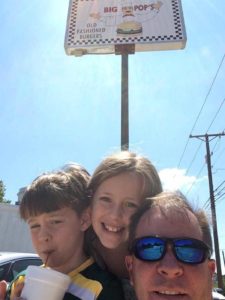 My father is an excellent cook, and he often would whip up some great repast for a summer lunch. However, my fondest memories of those days were of lunches at the “The Steer,” a local restaurant in my hometown in Virginia. In answer to my protests requesting a burger at one of the fast food joints, my father always answered, “Nothing interesting ever happened at a fast food place.”
My father is an excellent cook, and he often would whip up some great repast for a summer lunch. However, my fondest memories of those days were of lunches at the “The Steer,” a local restaurant in my hometown in Virginia. In answer to my protests requesting a burger at one of the fast food joints, my father always answered, “Nothing interesting ever happened at a fast food place.”
Oh how right he was! The entire local color of my hometown would pass before me as Dad and I ate our bacon cheeseburgers with fries (Dad was an onion ring man). Many unspoken lessons were learned in that velvet painting festooned dining room: how to treat people, the wisdom of an old regular who always had some interesting story, or just the life story of Janice, the waitress whose delivery of our food was always accompanied by a strong smell of hairspray. I valued those times with my father. Living 2,000 miles away from him I don’t get to share a lunch with him as often as I’d like.
As a teacher, I am blessed with the ability to spend summers with my 7 and 8 year-old daughters. This past summer, faced with the challenge of filling days with indoor activities that would avoid the heat, my daughters and I came up with the idea of The 2017 Burger Tour of Waco.
If you are looking for reviews of our dining experiences, you will not find them here. Initially I had intended to rate our experiences and have even been implored to publish our rankings on social media, but I came to the realization that to do so detracted from our adventure. If we began to evaluate our experience then it began to devalue it in many ways. I did not want our time together to be relegated to a Yelp! Review.
We chose eight locally owned burger joints (no fast food allowed) over the course of the summer. Cupp’s Drive-In, Tom’s Burgers, Health Camp, Kitok’s, Dubl-R, Kims, Captain Billy Whizbang’s, and Big Pop’s were our chosen destinations for our culinary tour. I will not describe all of our stops and omissions should not be seen as negative reviews. Rather, some of the memories are a bit more indelible than others.
Our first stop was Health Camp, where we partook of a cheeseburger combo with fries and I got to watch their eyes light up as I introduced them to their first peanut butter and chocolate milkshake. As we ate I described to them how long the restaurant had been there and discussed the traffic circle and the nearby Elite Café. It was there that we started our tradition of taking a group selfie in front of the signs of the restaurants.
At Cupp’s, one of my daughters let it be known that we were on a burger tour which immediately raised the staff’s competitive spirit. They wanted to know what other places we’d visited and how they compared. As they would at Dubl-R, the girl’s loved sitting at the counter watching their food being cooked and hearing the stories of the history of the restaurant.
Kitok’s was a repeat performance for us as I had introduced them to the place last year between soccer games. They remembered it as the place I had tried to sneak vegetables into their diet via the oriental fries. Sadly, they didn’t fall for it this time. We did, however; use the time to celebrate my hiring to a new teaching position. We are still working on the vegetables.
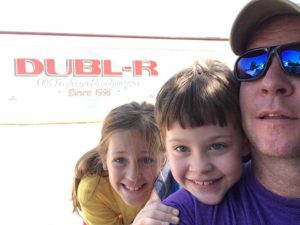 Big Pop’s brought an unexpected church reunion as it seemed like half of our congregation was dining there that day. The impromptu gathering along with the juicy burgers, made the place feel like home and the relaxed atmosphere allowed the girls and I to joke and laugh with our friends.
Big Pop’s brought an unexpected church reunion as it seemed like half of our congregation was dining there that day. The impromptu gathering along with the juicy burgers, made the place feel like home and the relaxed atmosphere allowed the girls and I to joke and laugh with our friends.
The topic of our summer challenge comes up in conversation sometimes as we plan are for next year’s challenge, with taquerias, breakfast places, and sandwich shops in the mix (sadly, vegetables are still not on the list.) My girls seem less interested in the type of food and more so in the time we will spend together. What began as as a simple way to idle away the hours of a hot day has grown into a shared family memory with pictures to boot!
To this day I do not know if my father took us out to lunch just to eat or if he had some deeper, educational motive in mind. I’d like to think that he, like myself, discovered that while life will always teach you a lesson and we will always have food; the time we have with our children is far more precious.
 George Stonikinis is a Texas History teacher at La Vega Junior High School. He is the father of 3 daughters, 4 cats, and one crazy dog. A self-described nerd, he enjoys history and metal detecting.
George Stonikinis is a Texas History teacher at La Vega Junior High School. He is the father of 3 daughters, 4 cats, and one crazy dog. A self-described nerd, he enjoys history and metal detecting.
By Rebecca Nall
In 2008, Baylor University’s Mayborn Museum Complex introduced a Free Sunday program that offered free admission on the first Sunday of every month, with the goal of reaching under-served audiences in the community. The success of Free Sundays continued to grow, in fact, last year the average attendance was around 1300 people. When you consider that this is during a four-hour period and the average visitation on other Sundays is 250, you begin to see the impact of this program.
Over the last several years, the museum began tracking the zip codes of attendees on Free Sundays to determine if we were reaching our target audience. Only 20% of our visitation on those days were from zip codes 76704, 76706, and 76707, which have the highest percentage of residents living under the poverty level. Considering this and the fact that Sunday might not be an ideal day for everyone to visit the museum, we started to wonder if we were doing our best to reach the audiences who need us most.
This fall, we said goodbye to our Free Sunday program and launched Mayborn Reach Out to reach new and under-served audiences. We believe this evolution will allow us to better serve our local community. Through more strategic advertising, we plan to work harder to get the word out to low-income families. Mayborn Reach Out also allows people to visit the museum at their convenience, not just one day a month.
Mayborn Reach Out encompasses three new programs that provide visitors of all means access to the resources within the museum: Community Days, Borrow a Membership, and participation in Museums For All.
Community Days
Visitors can explore the Discovery Center, natural and cultural history exhibits, and the Gov. Bill & Vara Daniel Historic Village at no admission cost.
- Monday, January 15, 2018
- Wednesday, May 19, 2018
- Saturday, September 24, 2018
Borrow a Membership
The Mayborn Museum has partnered with the Waco/McLennan County and Hewitt Public Libraries to offer library patrons the opportunity to borrow a museum membership at no cost. Interested families or individuals may visit their nearest branch to check out a pass for free admission to the museum.
Museums for All
The Museums for All program provides discounted museum admission for visitors that receive public assistance. It is a signature access program of the Association of Children’s Museums (ACM) and the Institute of Museum and Library Services (IMLS) to encourage families of all backgrounds to visit museums regularly and build lifelong museum habits. Effective October 1, the program enables low-income families to visit the Mayborn Museum Complex for a minimal fee. For $1 each, two adults and all children in the household are admitted with the presentation of an Electronic Benefits Transfer (EBT) card. EBT card holders are also eligible for a discounted membership of $10.
It is thanks to our loyal constituents, members, and friends that we are able to offer access programs like this. Thanks for helping us build a stronger community! Museums like ours are often the spark that encourages lifelong learning, and we believe that everyone has a right to access this informal extension to traditional classroom education.
 Rebecca Tucker Nall is the Assistant Director of Exhibits, Communication, and Visitor Services at the Mayborn Museum Complex. She is a museum enthusiast, an avid reader, and a mother to two small, yet fierce girls.
Rebecca Tucker Nall is the Assistant Director of Exhibits, Communication, and Visitor Services at the Mayborn Museum Complex. She is a museum enthusiast, an avid reader, and a mother to two small, yet fierce girls.
By Jeanne Dittman
 Have you ever stopped in a store to appreciate a handlettered sign simply for its beautiful artistry and not just for what it was selling? Do the shapes of letterforms intrigue and delight you? Do you have a favorite pen that you must use for certain special occasions? Then the Waco Calligraphy Guild may be your kind of people.
Have you ever stopped in a store to appreciate a handlettered sign simply for its beautiful artistry and not just for what it was selling? Do the shapes of letterforms intrigue and delight you? Do you have a favorite pen that you must use for certain special occasions? Then the Waco Calligraphy Guild may be your kind of people.
Founded in 1988, the Waco Calligraphy Guild is a group of creative people united by our love of letters. Some of us hang our shingles out as professional calligraphers, whereas some would just rather write and doodle on old shingles (or paper). Some of us have mastered many different lettering styles over the years – from classical Roman capitals to contemporary pointed pen script – whereas some have just picked up a calligraphy pen for the first time in recent months. Some of us teach calligraphy, some of us attend calligraphy workshops and conferences, and all of us are lifelong students of the lettering arts.
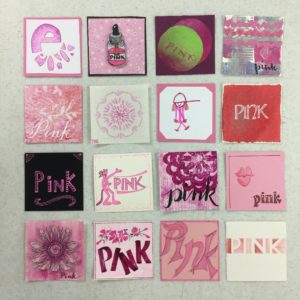 The guild currently has a membership of around 40 people, and we gather on the second Saturday of each month at 10am at St. Matthew Lutheran Church (800 North New Road in Waco). We always serve snacks, since some of us are excellent bakers and some of us are excellent buyers of baked goods. We begin with a short business meeting, share our 3×3 artwork response to a monthly prompt (a small “canvas” that can be chock-filled with inspiration), break for some conversation and treats, and then proceed with our educational program. This hour-long program is usually led by one of our members, and most often is a hands-on lesson in something pertaining to the lettering arts. We are sometimes writing a new lettering style or using a new tool. We are sometimes learning a new book or card technique on which our lettering can be placed. And, we are sometimes introduced to an entirely new art form to which letters may be added later. No matter the topic, we leave inspired for having done something creative with a room full of creative people.
The guild currently has a membership of around 40 people, and we gather on the second Saturday of each month at 10am at St. Matthew Lutheran Church (800 North New Road in Waco). We always serve snacks, since some of us are excellent bakers and some of us are excellent buyers of baked goods. We begin with a short business meeting, share our 3×3 artwork response to a monthly prompt (a small “canvas” that can be chock-filled with inspiration), break for some conversation and treats, and then proceed with our educational program. This hour-long program is usually led by one of our members, and most often is a hands-on lesson in something pertaining to the lettering arts. We are sometimes writing a new lettering style or using a new tool. We are sometimes learning a new book or card technique on which our lettering can be placed. And, we are sometimes introduced to an entirely new art form to which letters may be added later. No matter the topic, we leave inspired for having done something creative with a room full of creative people.
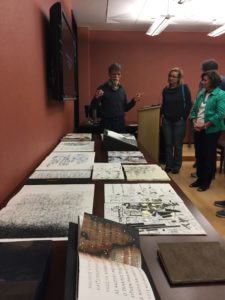 The calligraphic arts trace their roots to the medieval scribes who labored over their parchment and quills creating the exquisite manuscripts that now lie in museums and continue to inspire artists worldwide. Their techniques with broad-edged pens and inks have been studied through the centuries, and many of our lettering styles (and typefaces and computer fonts) are based on the elegant combinations of strokes that they first created. Even as technologies have changed the book arts – first the printing press and ultimately the computer – the elegance of hand-lettered artwork still holds a special place in the artistic world. Calligraphers have served queens and presidents through the years, as well as institutions conferring degrees and brides mailing wedding invitations. In recent years, the newest visual technologies of Instagram and Pinterest have sparked a renewed interest in the lettering arts. Pointed pen and pointed brush calligraphy have taken on a contemporary feel that can be widely seen in advertisements, home furnishings, and even the offerings of Magnolia Market.
The calligraphic arts trace their roots to the medieval scribes who labored over their parchment and quills creating the exquisite manuscripts that now lie in museums and continue to inspire artists worldwide. Their techniques with broad-edged pens and inks have been studied through the centuries, and many of our lettering styles (and typefaces and computer fonts) are based on the elegant combinations of strokes that they first created. Even as technologies have changed the book arts – first the printing press and ultimately the computer – the elegance of hand-lettered artwork still holds a special place in the artistic world. Calligraphers have served queens and presidents through the years, as well as institutions conferring degrees and brides mailing wedding invitations. In recent years, the newest visual technologies of Instagram and Pinterest have sparked a renewed interest in the lettering arts. Pointed pen and pointed brush calligraphy have taken on a contemporary feel that can be widely seen in advertisements, home furnishings, and even the offerings of Magnolia Market.
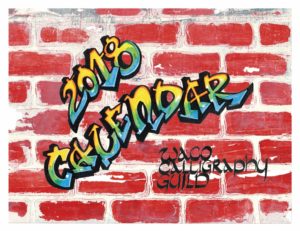 If any part of this expansive history of lettering intrigues you, you are not alone. We invite you to visit the Waco Calligraphy Guild and find your people already gathered. You can see what we are up to each month by viewing our colorful newsletters and other goodies on our website. We have participated in the Waco Cultural Arts Fest for years – perhaps you have stopped by our booth at the end of the Suspension Bridge and had your name lettered by us on one of our giveaways. We also produce a full-color calendar each year with original artwork by 12 (or more) of our members – they are $10 each and available for a limited time through a guild member. Feel free to visit a guild meeting on us – membership is only $25 a year, but you don’t need to be a member to attend the first time. And please never let a lack of supplies prevent you from attending a program – we always have plenty to share. (calendar)
If any part of this expansive history of lettering intrigues you, you are not alone. We invite you to visit the Waco Calligraphy Guild and find your people already gathered. You can see what we are up to each month by viewing our colorful newsletters and other goodies on our website. We have participated in the Waco Cultural Arts Fest for years – perhaps you have stopped by our booth at the end of the Suspension Bridge and had your name lettered by us on one of our giveaways. We also produce a full-color calendar each year with original artwork by 12 (or more) of our members – they are $10 each and available for a limited time through a guild member. Feel free to visit a guild meeting on us – membership is only $25 a year, but you don’t need to be a member to attend the first time. And please never let a lack of supplies prevent you from attending a program – we always have plenty to share. (calendar)
We hope that you will feel welcomed and inspired when you visit. I have been a member of calligraphy guilds in several parts of the country, I’ve attended several calligraphy conferences over the years, and I have found calligraphers everywhere to be genuinely gracious and generous artists and delightful human beings. We would love to have you join us.
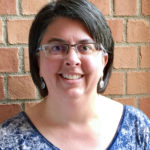 Jeanne Dittmann is a calligrapher and graphic designer who has worked as a freelance artist in Waco for over 14 years. She serves currently as President of the Waco Calligraphy Guild, and she teaches calligraphy through Baylor University Continuing Education. Her day job is the Box Office and Marketing Manager for the Baylor University Theatre. Jeanne and her family attend St. Matthew Lutheran Church, where she and DeAnna Toten Beard started the Fine Arts Ministry 8 years ago. For more information, please contact her at lettersalot@gmail.com
Jeanne Dittmann is a calligrapher and graphic designer who has worked as a freelance artist in Waco for over 14 years. She serves currently as President of the Waco Calligraphy Guild, and she teaches calligraphy through Baylor University Continuing Education. Her day job is the Box Office and Marketing Manager for the Baylor University Theatre. Jeanne and her family attend St. Matthew Lutheran Church, where she and DeAnna Toten Beard started the Fine Arts Ministry 8 years ago. For more information, please contact her at lettersalot@gmail.com
The mission of AVANCE is to unlock America’s potential by strengthening families through effective parent education and support programs. The AVANCE Parent-Child Education Program empowers families to break the cycle of poverty through proven two-generation approach combining parent education and early childhood development. We envision our families as the child’s first teacher, as advocates for their children engaged in their child’s school, and as leaders for their families and their communities. We want to give our families hope for the future. One of my favorite Bible verses is Jeremiah 29:11,” For I know the plans I have for you, declares the Lord, plans for welfare and not for evil, to give you a future and a hope.” Isn’t that what we want for our families and our community?
This past week I was able to involve myself in two new endeavors that I hope will help me be a better advocate and leader for my community and more specifically the AVANCE families I serve. I was accepted for LeadershipPlenty Institute. A training program for people interested in developing and improving their leadership skills to allow them to work more effectively within their communities and the organizations they attend. What a blessing for Waco to have this program! My first thought was this is a great opportunity in which we need to involve our Latino community. It is designed for individuals of various backgrounds, occupations, and experiences. Diversity makes us stronger and together we can achieve more. I hope you take time to explore and consider participating.
My second new experience here in Waco is that I signed up to be a mentor with LEAD. LEAD stands for Leadership, Education, and Development. It is an educational partnership that pairs high school students with business leaders to foster mentoring relationships that educate and expose students to various business fields. It is a truly powerful program sponsored by our local Greater Waco Chamber of Commerce. Having a mentor allows young students to visualize a successful future. It gives them a vision , someone they can identify with. As a Latino Executive Director of a non-profit here in Waco I feel that I can serve as a role model for Latino youth as they navigate their journey to adulthood. It is my way of making a difference. My way of giving hope and a future here in Waco.
 Felipe Benecio Garza graduated from Our Lady of the Lake University with an MSW. He has over 40 years experience working with children and families in various leadership capacities. He is on the Board of Texans Care for Children and the Board of Advocates for the Diana R. Garland School of Social Work. He is Executive Director of AVANCE Waco.
Felipe Benecio Garza graduated from Our Lady of the Lake University with an MSW. He has over 40 years experience working with children and families in various leadership capacities. He is on the Board of Texans Care for Children and the Board of Advocates for the Diana R. Garland School of Social Work. He is Executive Director of AVANCE Waco.
The Act Locally Waco blog publishes posts with a connection to these aspirations for Waco. If you are interested in writing for the Act Locally Waco Blog, please email ashleyt@actlocallywaco.org for more information.
By Maegan Bennight
Raising a child in today’s world is tough! Every family has their own challenges they face whether it be financial difficulty, finding the time to get everything done, legal troubles, figuring out what’s for dinner, having that difficult conversation, health problems, our child’s behavioral issues… and sometimes it’s that last option on multiple choice tests, “All of the above.”
Growing up, I often heard the phrase “It takes a village to raise a child”, but it didn’t really hit home for me until recently. Truth be told, I’m a bit of a control freak, and it’s hard for me to ask for help. That wasn’t such a problem when I was a mom to just one child, but since I became a mom of two, even with the help of a super supportive husband, I’ve had to learn that having a village is critical to my family’s success…and my sanity. But what does a village look like? In reality, it has a lot of different faces. For me, it’s the friend that periodically calls or texts reminding me that we need to hang out and that I still haven’t asked her to babysit my kids so I can have time to myself or to have a date night with my husband. It’s my sister that I can call and vent to about anything knowing that she will empathize with me but just might challenge me to rethink my perspective on whatever issue I’m venting about. It’s the app on my phone that gives me a daily Bible verse to help me tend to my spiritual needs and another app that provides me with ideas for activities to engage in with my kids. It’s my daughter’s pre-school teacher that will give me suggestions on how to deal with a particular behavior my daughter is displaying at school. It’s a lady from the local WIC office that happens to engage in a conversation with me at a community event and then ends up helping me trouble shoot ways to get my infant to take a bottle. It’s the mom I met at a Bible study group who friended me on Facebook and suggested I attend an event that connected me to other moms going through a similar season of life. It’s the coworker that gently touches my elbow and asks me how things are going even when she’s dealing with her own struggles. Our villages are all around us. Sometimes our village members are obvious because they’re involved in our day to day lives. Other times they aren’t so obvious for whatever reason, but they are there, waiting for us to recognize and call them to action.
Sometimes we have to be intentional about adding members to our village. MCH Family Outreach offers services to those who are interested in expanding their village. Join us for food, fellowship and fun as we come together to support one another through our parenting journeys.
MCH Caregiver Empowerment Groups
2nd Tuesday of the month
Held at the MCH Family Outreach office, 1111 Herring Avenue, Waco 76708
Next meetings: October 10th & November 14th
Two times to choose from: 11 am-Noon or 6-7 pm
Call 254-750-1263 with any questions
Hope to see you there!

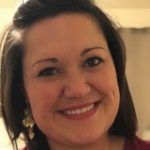 Maegan Bennight is a case manager in the MCH Family Outreach office providing support to parents, grandparents and other caregivers raising children in and around the Waco community. She is a wife, a mother to a 3 year old daughter and 5 month old son, a graduate of Texas A&M University, and a Central Texas native. You can contact her at mbennight@mch.org.
Maegan Bennight is a case manager in the MCH Family Outreach office providing support to parents, grandparents and other caregivers raising children in and around the Waco community. She is a wife, a mother to a 3 year old daughter and 5 month old son, a graduate of Texas A&M University, and a Central Texas native. You can contact her at mbennight@mch.org.
